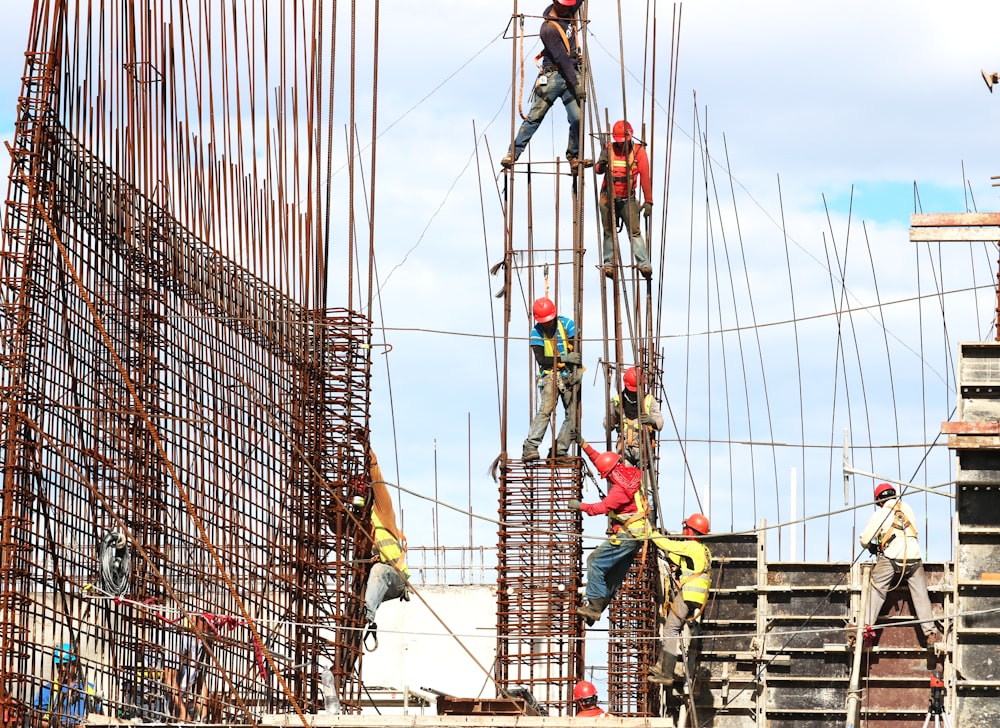You are in the construction industry and you’ve heard about “construction bonds” but aren’t quite sure what they are? This is a common place for confusion, as types of construction bonds can be complex and various. In this blog post, we’ll explain the basics of construction bonds to help you better understand their importance and how they work in your business operations. So if you’re looking to learn more about what goes into establishing these important contracts – everything from definable terms to government regulations — read on!
Introducing Construction Bonds and What They Are Used For
Construction bonds are an important tool in the construction industry. In essence, they represent a contract that protects all parties involved in a project, ensuring payment and performance will occur as specified. They act like an insurance policy that bondholders pay for in order to guarantee timely completion and quality of work while assuring owners receive what was promised. Construction bonds can be required for projects of all sizes, from small home repair or remodeling jobs to large commercial constructions such as universities or office buildings. With construction being one of the largest industries in the world, understanding the different types of construction bonds is essential for everyone involved – from property owners and developers to general contractors and subcontractors.
Understanding Different Types of Construction Bonds
When it comes to construction projects, having the right bonds in place can be the key to protecting all involved parties. Among the most important are bid bonds, performance bonds, payment bonds, supply bonds and maintenance bonds—each of which offer liability protection to different stakeholders during a construction process. It’s essential (and often required by law) that contractors understand their obligations and understand each type of bond, who they’re designed to protect, and what’s required for them to be in effect.
Understanding different types of construction bonds might seem overwhelming at first glance, but breaking down each bond type’s roles and responsibilities can help make it all manageable.
With a better comprehension of the mechanics of these various bond types, anyone involved in construction will have peace of mind when it comes to protecting yourself and others as you move forward with your project.
a. Maintenance Bonds
Maintenance bonds ensure that any contractor will maintain and repair what they’ve built during the specified time. The bond amount is set to cover all costs associated with the maintenance, including labor and materials. A third party, usually an insurance company, guarantees the payment of these costs if the contractor fails to do so. The construction maintenance bonds help protect both the property owner and the general public from potential dangers caused by shoddy maintenance work. It’s important for anyone in charge of deciding a construction project to understand how a maintenance bond works and how it can help keep their project on track and safe over its life cycle.
b. Payment Bonds
Payment bonds are a vital part of the construction industry, as they protect both parties involved in the project. Essentially, a payment bond guarantees that everyone who supplies labor or materials for the job will be paid in full upon successful completion of the project. Generally, payment bonds are required by public entities and may also be requested by private customers to ensure that subcontractors and suppliers get paid even if the person originally hired them fails to pay the money owed. This can save considerable stress and conflict during a construction project, making payment bonds an invaluable asset.
c. Performance Bonds
On construction projects, performance bonds are an essential part of the financial backing equation. This type of bond is used to guarantee that the contracted job will be completed correctly and in a timely manner according to the agreement between the owner of the project and the contractor. This bond offers protection to both parties—the contractor’s workmanship is guaranteed, while owners have peace of mind should unexpected issues arise with unfinished jobs or failure to meet certain criteria.
How to Get Your Bond Situation Under Control
Are you looking to get your bond situation under control? Maybe you’re starting a construction project, but need to understand the different types of bonds involved. Don’t worry – you’re not alone! Knowing the basics of construction bonds is essential in order to properly manage your project, and I’m here to explain it all. Let’s start by looking at the three different types of construction bonds: bid, performance, and payment. After that, we can discuss the details of getting them and make sure that you’re in control of your bond situation for your construction needs.
Advantages and Disadvantages of Obtaining Construction Bonds
Obtaining a construction bond is typically beneficial for both contractors and the contracting parties involved. For contractors, construction bonds provide security against nonpayment; this guarantees that if the contractor fails to properly finish a project, they will still receive compensation. On the other hand, contracting parties can feel secure that their project will be completed according to the conditions they have agreed upon, as construction bonds guarantee completion by providing assurance against fraud or negligence on the part of contractors.
However, there are disadvantages associated with getting a construction bond: ensuring payment with these bonds means that contractors must pay an upfront cost in order to obtain them. This cost may be a deterrent for small businesses or individuals who lack sufficient funds and could impact their ability to gain new contracts.
Important Points to Keep In Mind When Applying For a Construction Bond
Applying for a construction bond is an important decision to make on any building project, so it’s essential to keep certain points in mind before making a commitment. When exploring bond options, be sure to understand the terms and conditions detailed in the bond agreement. Also, review your contractor’s financial history and record for timely completion of other projects prior to entering into a contract with them. Additionally, each type of bond has its own cash-flow considerations, as well as limits and exclusions, detailing what is covered; take the time to fully comprehend them before moving forward. Finally, use trusted sources when doing research on construction bonds such as financial advisors or insurance agents who are experts in this area.
In conclusion, construction bonds are a valuable tool for providing assurance that the contractor can deliver what was agreed upon in the contract. You can get your bond situation under control by understanding the three common types of bonds and taking into account the advantages and disadvantages associated with them.
Moreover, there are important points to keep in mind such as researching your contractor’s financial history, reviewing the terms and conditions detailed in the bond agreement, and using trustworthy resources for guidance before making a commitment. By taking these precautions, you can ensure that your construction project will go as smoothly as possible.
Published by HOLR Magazine.




